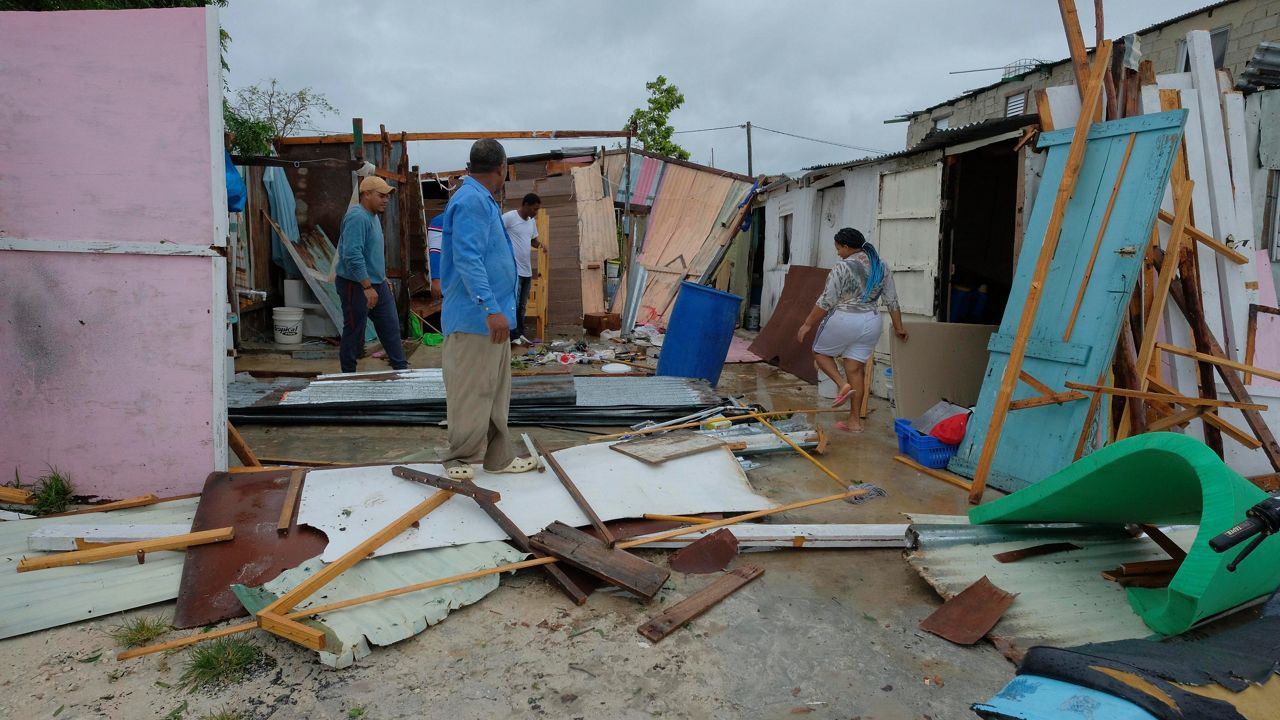Hurricane Fiona roared over the Dominican Republic on Monday, a day after knocking out power to all of Puerto Rico and causing damage the governor described as "catastrophic." Many people were also left without water service.
The blow from Fiona was made more devastating because Puerto Rico has yet to recover from Hurricane Maria, which killed nearly 3,000 people and destroyed the power grid in 2017. Five years later, more than 3,000 homes on the island still have blue tarps for a roof.
The wind and water from Fiona stripped the pavement from roads, tore off roofs and sent torrents pouring into homes. The storm also took out a bridge and flooded two airports.
Authorities reported no deaths directly from the hurricane, but Puerto Rico officials said it was too early to know the full scope of damage. The storm was still expected to unleash torrential rain across the U.S. territory that is home to 3.2 million people.
One death was associated with the blackout — a 70-year-old man who was burned to death after he tried to fill his generator with gasoline while it was running, officials said.
Gov. Pedro Pierluisi declined to say how long it would take to fully restore electricity, but said for most customers it would be "a question of days"
Since the start of the storm, National Guard troops have rescued more than 900 people, Gen. José Reyes told a news conference.
Meanwhile in the Dominican Republic, the government's emergency center reported downed trees and power poles. Nearly 800 people were evacuated to safer locations, and more than 500 were in shelters, officials said.
The National Weather Service office in Puerto Rico said flash flooding was occurring in south-central parts of the island and tweeted, "MOVE TO HIGHER GROUND IMMEDIATELY!"
Up to 22 inches of rain fell in some areas of Puerto Rico and forecasters said another 4 to 8 inches could fall as the storm moves away, with even more possible in some places.
Rain totals of up to 15 inches were projected for the eastern Dominican Republic, where authorities closed ports and beaches and told most people to stay home from work.
"It's important people understand that this is not over," said Ernesto Morales, a weather service meteorologist in San Juan.
He said flooding reached "historic levels," with authorities evacuating or rescuing hundreds of people across Puerto Rico.
"The damages that we are seeing are catastrophic," Pierluisi said.
Water service was cut to more than 837,000 customers — two thirds of the total on the island — because of turbid water at filtration plants or lack of power, officials said.
Before dawn Monday, authorities in a boat navigated the flooded streets of the north coast town of Catano and used a megaphone to alert people that the pumps had collapsed, urging them to evacuate as soon as possible.
Authorities said at least 1,300 people spent the night in shelters across the island.
Brown water poured into streets and homes and closed airports in Ponce and Mayaguez.
The system also ripped asphalt from roads and washed away a bridge in the central mountain town of Utuado that police said was installed by the National Guard after Maria hit as a Category 4 storm.
Fiona also tore the roofs off homes, including that of Nelson Cirino in the northern coastal town of Loiza.
"I was sleeping and saw when the corrugated metal flew off," he said as he watched rain drench his belongings and wind whip his colorful curtains into the air.
By early afternoon, Fiona had moved into the open Atlantic, where it was expected to strengthen, according to the National Hurricane Center.
At 2 p.m. Monday, it was centered about 165 miles southeast of Grand Turk Island and was heading northwest at 9 mph, with maximum sustained winds of 90 mph.
Tropical storm-force winds extended for 140 miles from the center.
U.S. President Joe Biden declared a state of emergency as the eye of the storm approached the island's southwest corner.
Puerto Rico's health centers were running on generators, and some of those failed. Health Secretary Carlos Mellado said crews rushed to repair generators at the Comprehensive Cancer Center, where several patients had to be evacuated.
Fiona previously battered the eastern Caribbean, killing one man in the French territory of Guadeloupe when floodwaters washed his home away, officials said.
The system hit Puerto Rico on the anniversary of Hurricane Hugo, which slammed into the island in 1989 as a Category 3 storm.



